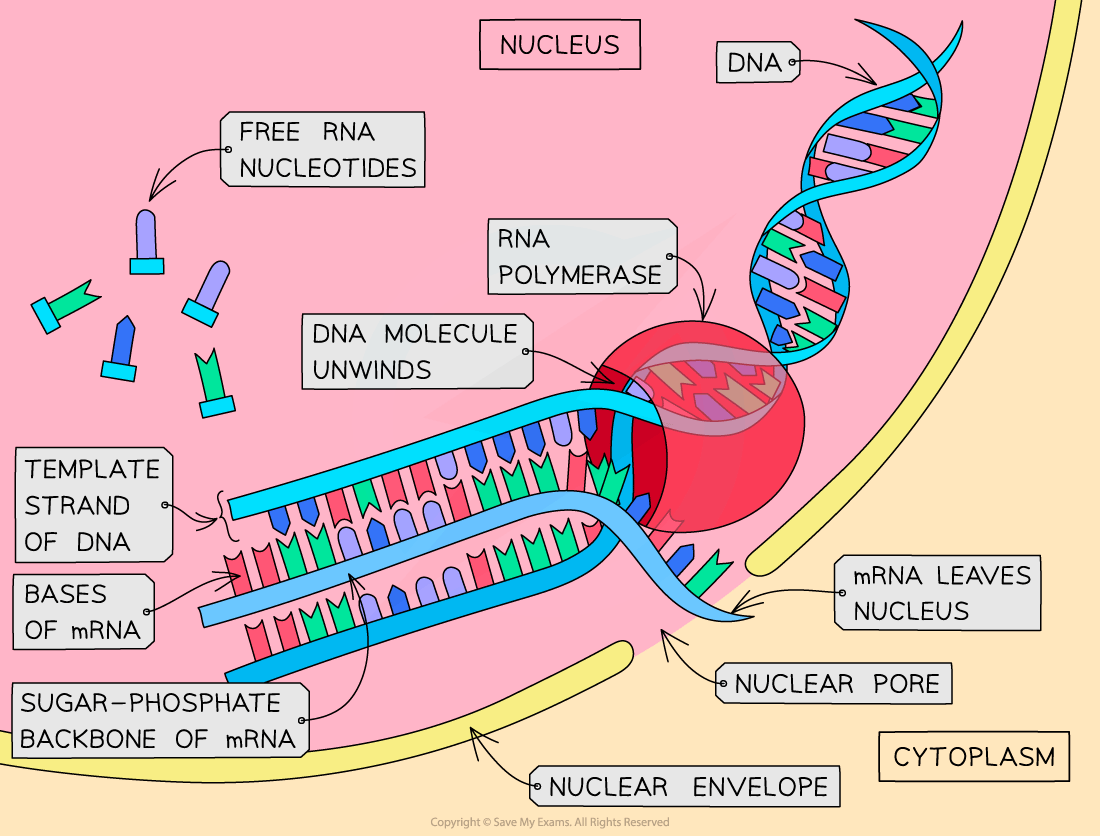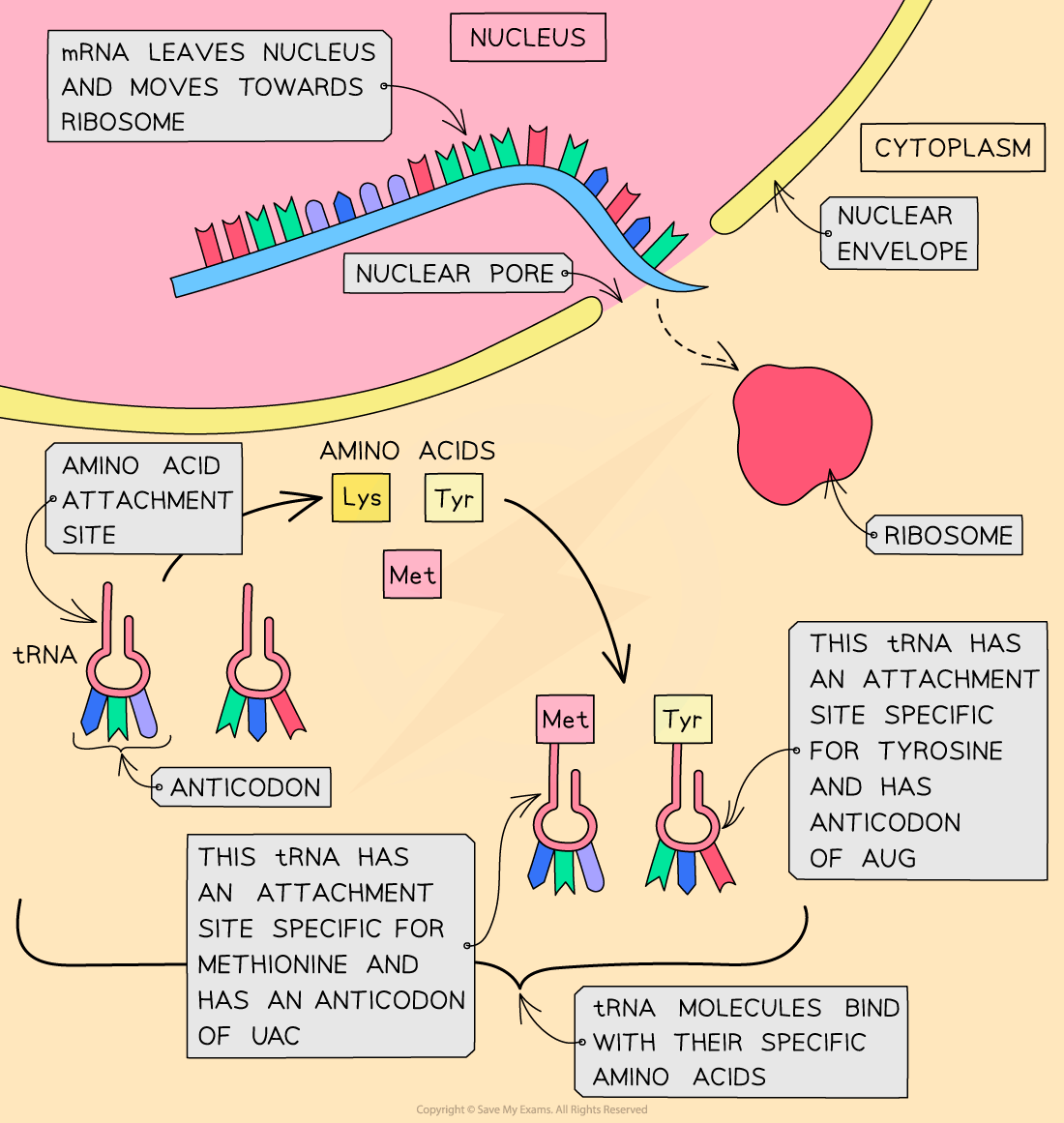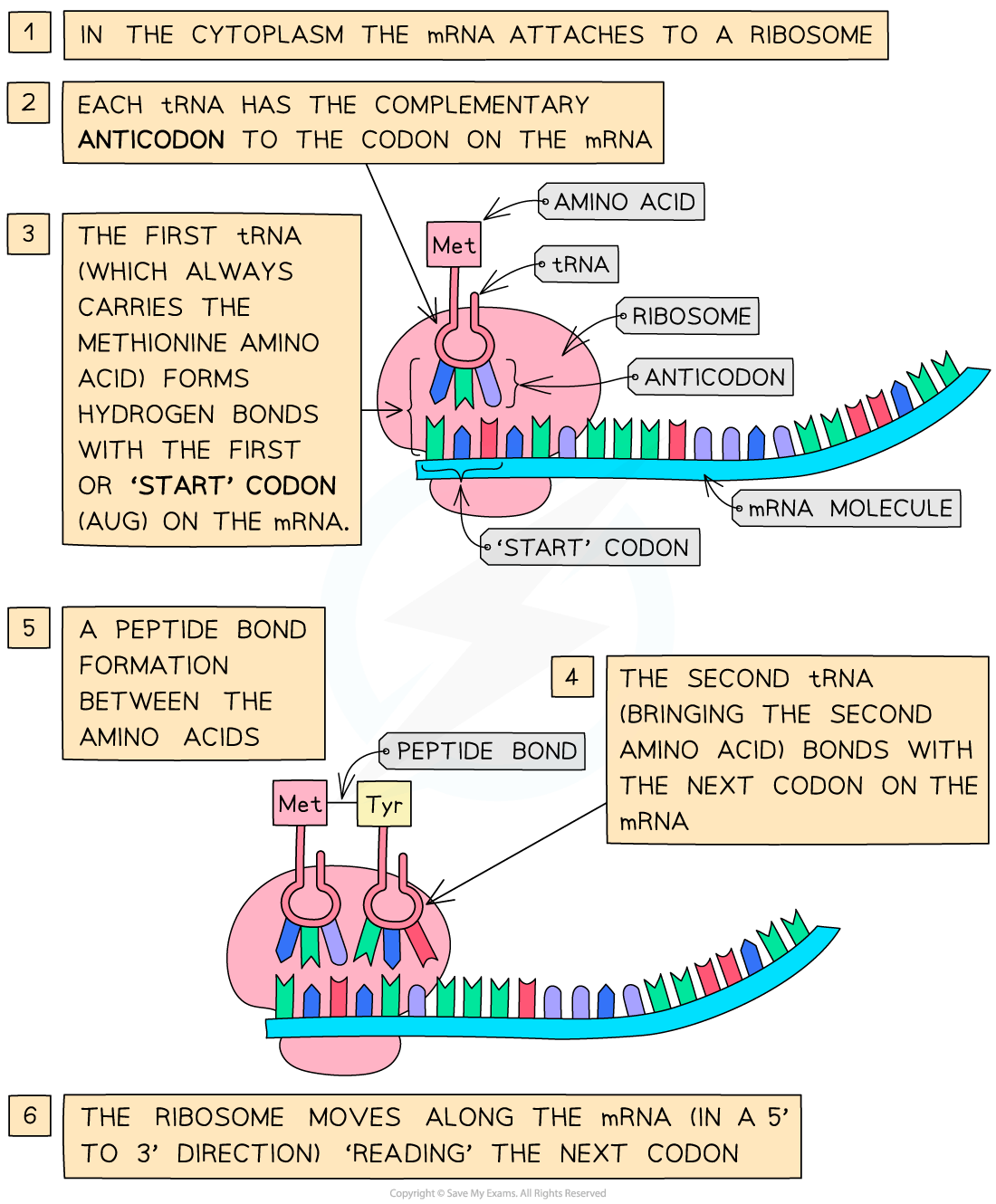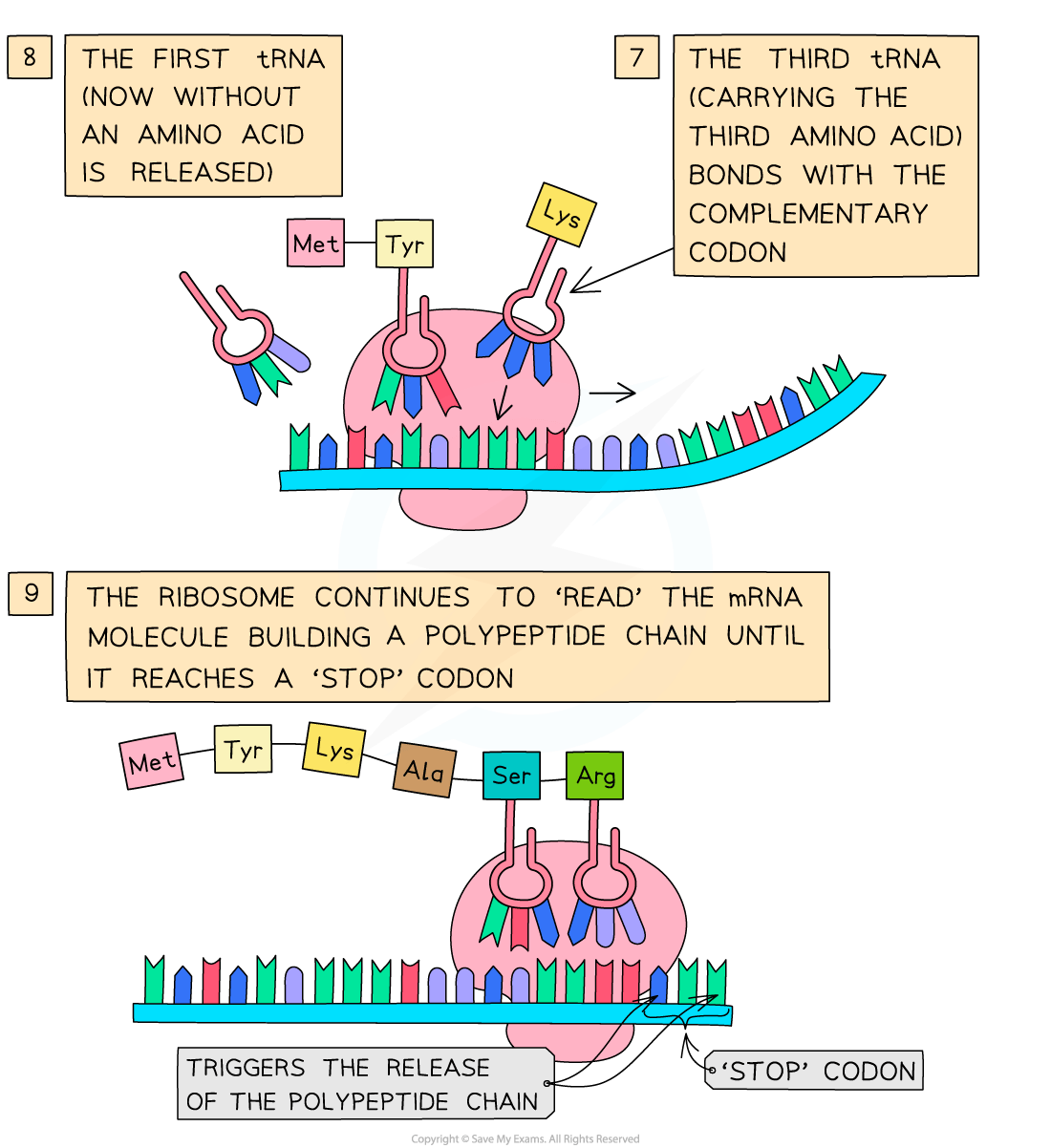Constructing Polypeptides (Cambridge (CIE) AS Biology): Revision Note
Exam code: 9700
Constructing polypeptides: transcription & translation
A gene is a sequence of nucleotide bases in a DNA molecule that codes for the production of a specific sequence of amino acids, that in turn make up a specific polypeptide (protein)
This process of protein synthesis occurs in two stages:
Transcription:
DNA is transcribed and an mRNA molecule is produced
Translation:
mRNA (messenger RNA) is translated and an amino acid sequence is produced
Transcription
This stage of protein synthesis occurs in the nucleus of the cell
Part of a DNA molecule unwinds (the hydrogen bonds between the complementary base pairs break)
This exposes the gene to be transcribed (the gene from which a particular polypeptide will be produced)
A complementary copy of the code from the gene is made by building a single-stranded nucleic acid molecule known as mRNA (messenger RNA)
The DNA triplets of bases are transcribed as mRNA codons
The single-stranded mRNA molecule can fit through the pores in the nuclear envelope, unlike double-stranded DNA
Free RNA nucleotides pair up (via hydrogen bonds) with their complementary (now exposed) bases on one strand (the template strand) of the ‘unzipped’ DNA molecule
The sugar-phosphate groups of these RNA nucleotides are then bonded together by the enzyme RNA polymerase to form the sugar-phosphate backbone of the mRNA molecule
When the gene has been transcribed (when the mRNA molecule is complete), the hydrogen bonds between the mRNA and DNA strands break
The double-stranded DNA molecule then re-forms
The mRNA molecule then leaves the nucleus via a pore in the nuclear envelope

Translation
This stage of protein synthesis occurs in the cytoplasm of the cell
After leaving the nucleus, the mRNA molecule attaches to a ribosome
In the cytoplasm, there are free molecules of tRNA (transfer RNA)
These tRNA molecules have:
A triplet of unpaired bases at one end, known as the anticodon
A region where a specific amino acid can attach at the other
There are at least 20 different tRNA molecules, each with a specific anticodon and specific amino acid binding site
The tRNA molecules bind with their specific amino acids (also in the cytoplasm) and bring them to the mRNA molecule on the ribosome
The anticodon on each tRNA molecule pairs with a complementary codon on the mRNA molecule
Two tRNA molecules fit onto the ribosome at any one time, bringing the amino acid they are each carrying side by side
A peptide bond is then formed between the two amino acids
This process continues until a ‘stop’ codon on the mRNA molecule is reached
The 'stop' codon acts as a signal for translation to stop and at this point the amino acid chain coded for by the mRNA molecule is complete
This amino acid chain then forms the final polypeptide



Examiner Tips and Tricks
Make sure you learn both stages of protein synthesis fully.
Don’t forget—transcription occurs in the nucleus but translation occurs in the cytoplasm!
Be careful—DNA polymerase is the enzyme involved in DNA replication; RNA polymerase is the enzyme involved in transcription—don’t get these confused.

Unlock more, it's free!
Did this page help you?